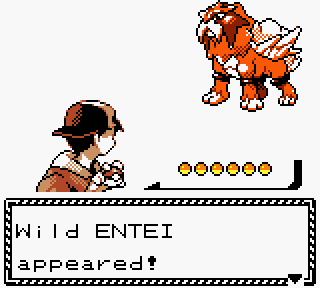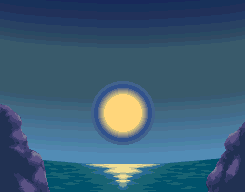Features
20 Years Later: ‘Pokémon Gold and Silver’ Took the Franchise’s Next Evolutionary Step
The legacy of Johto lives on in what was Game Freak’s next evolutionary step in the world of Pokémon.
Two regions to explore, 16 gym badges to collect, two Elite Four runs to conquer, a battle tower to climb, a previous champion to best at your own game, and 251 pocket monsters to capture. There is no denying that the Johto region of Pokémon Gold and Silver had- and still may contain- the most amount of content to dig into for any player when it comes to everything outside of filling up all the entries of Sword and Shield’s Pokédex.
Pokémon Gold and Silver released in Japan 20 years ago today on November 21st, 1999. The Johto region still stands as not only one of the most renowned Pokémon games in the franchise but a contender for one of the top Game Boy and Game Boy Color games to be released on the handheld systems. No matter which entry is your favorite, there is no denying that Pokémon Gold and Silver was the next evolutionary step on Game Freak’s stairway to fame in what is now currently the largest franchise in history.

A Daunting Next Step
Pokémon Gold and Silver’s development was greenlit immediately after Red and Green had launched in Japan. The untitled sequels at the time were slated for release for the holiday season of 1998. However, during this time frame, Game Freak had also been working on a multitude of Pokémon projects including the Nintendo 64 game Pokémon Stadium and a rebranded companion version to Red that would replace Green for the overseas release of the games. The majority of the small staff team of programmers had already been occupied once the development of Gold and Silver truly began.
What was originally intended to be one year of development slowly turned into three and a half due to a lack of on-hand resources and major programming difficulties that inevitably delayed what was to be the company’s most ambitious release yet. Game Freak found themselves in a troubling situation as the independent company had to balance out time for overseeing the entire Pokémon brand that had expanded into an anime, cards, toys, and even soon to be movies. The worldwide phenomenon was continuing to expand faster than Game Freak could keep up with.

Late into Gold and Silver’s development, Game Freak’s team of programmers called upon star-man of the industry Satoru Iwata as the developers were having trouble with various coding bugs and fitting all the game assets onto the small memory storage of the Game Boy’s cartridges. Iwata stepped in immediately and saved yet another second-party Nintendo project from disaster. At the beginning of Gold and Silver’s development, Iwata had single-handedly recreated the entire battle system code for Pokémon Stadium by just simply playing the games and analyzing some internal coding. Iwata’s trustworthy knowledge instantly skyrocketed him to become one of the company’s most valuable informants. Nintendo’s future president returned to his all-star team of programmers working at HAL Laboratory to create graphical compression tools for Game Freak to use. This allowed the company to combine both the Johto and Kanto regions onto a single 1-megabyte Game Boy cartridge and meet their latest home territory release deadline.
The Next Phase of Evolution
Gold and Silver continued to build off of Red and Green by introducing the next region in the Pokémon world that would naturally set trends for the series going forward. One of these trends was the reoccurring introduction of a new region inspired by a different area of the world for each game.
Johto was the western half of a landmass shared by the previous game’s location. While Kanto had been based on the Kantō region of Honshu, Japan, the nearby Kansai region would become Johto’s core source of inspiration for its landscape as seen through not only its general location on the map but its architectural features. For example, the sharp shapings of rooftops and gateway entrances to towns known as torii are littered everywhere throughout Johto; some of Kansai’s most common building aesthetics.

Gold and Silver gained several new features that would ultimately become some of the most crucial and missed aspects of the mainline games. For starters, one important new feature that would solidify its place in future entries was the inclusion of a real-time clock. Multiple in-game events, visuals, and even Pokémon variety in the wild areas would alter depending on the time and day of the week. For example, the psychic owl species of Pokémon, Hoothoot and Noctowl, would only appear in the wild starting in the late afternoon. Eevee could only evolve into Umbreon at night, while the Bug Catching Contest was exclusively available at certain hours on weekdays.

Suicune, Entei, and Raikou became the first trio of legendary creatures to start what is now known as “roaming Pokémon.” Rather than traditionally entering a dungeon-like area, players would randomly encounter these three minor legendaries in the wild grass areas of the game after they had witnessed them book it from the Burned Tower of Ecruteak City during the story. When in battle, the Pokémon will attempt to flee immediately on its first turn. If any of the three are killed in battle, the beast will never be able to appear again on your save file.
The competitive scene for the series would begin to take its modern shape because of the introduction of both breeding and the move deleter. Breeding opened a new floodgate of multiplayer strategies by allowing specific Pokémon to obtain moves they would naturally not be able to learn through technical machines and evolution. Meanwhile, the move deleter finally allowed Pokémon to be rid of their HM moves that previously could not be overwritten, allowing players to freshly design their move-sets at any given time.
The most notable feature, however, would never see a return in a future game. Being able to journey across two different regions is by far Gold and Silver’s most proclaimed component. As stated before, Kanto and Johto share an extremely close geographical connection. Because of this, players can explore the entirety of Kanto after defeating the elite four- more than doubling the amount of content the game had to offer. Outside of the Johto games, this feature has never once returned to another Pokémon game.
The Legacy of Johto Lives On
At the time of its release, Gold and Silver received a highly positive reception from both audiences and critics. The most notable features praised by critics in reviews were the inclusions of more mechanics and typings that deepened the battle system along with the designs of the lineup of new Pokémon receiving all-around praise. During its lifetime on store shelves, the two versions nearly recreated the success of their predecessors as both combined with the sales of their later third enhanced entry Pokémon Crystal sold a total of 23 million copies. Today, Pokémon Gold and Silver are still regarded as some of the best Pokémon games, but not in their original form.

In 2010, trainers had the opportunity to return to the Johto region for the third time in the tenth anniversary generation two remakes Pokémon HeartGold and SoulSilver for the Nintendo DS. Following in the footsteps of Pokémon FireRed and LeafGreen, the generation two remakes not only attempted to streamline and fix the problems found in the original Game Boy entries of the series but they added a hefty new amount of content for both retuning veterans and newcomers on top of a gorgeous graphical overhaul.

Building off of the engine used for Pokémon Platinum, the enhanced remakes envisioned what is arguably the greatest interpretation yet of the Johto region by continuing to build off what the other DS games had already successfully established. HeartGold and SoulSilver contained nearly every feature found in a Pokémon game up until that point. It sought to continually expand upon modernizing the series through making needed accessibility changes and improving on the Nintendo Wi-Fi connectivity abilities that Diamond and Pearl had a rather shaky start with. Several lost features from previous games outside of Gold and Silver even managed to return for the remake. The beloved idea of having an interactive Pokémon partner to journey around the world with from Yellow, for example, made a comeback but this time any Pokémon could follow you as long as they had been placed in the first party slot.
While still being one of the Nintendo DS’s most commercially successful games, HeartGold and SoulSilver were not able to reach half the amount of sales their original incarnations had achieved. However, the games have averaged the highest critical reception of any mainline Pokémon game released in the franchise. The game notably received spotlight due to its included pedometer accessory the Pokéwalker. The device allowed players to place one Pokémon in the device. As a player walks in real-life, their Pokémon could collect experience, find items, and even catch other creatures that could be transferred directly back into the game.
Today, the original versions of Gold and Silver can be purchased on the Nintendo 3DS Eshop alongside the first Pokémon games- Red and Blue- that had released on the original Game Boy. Alongside the original generation two games, its counterpart successor Pokémon Crystal can also be purchased currently on the Eshop. 3DS home screen themes (as depicted to the left) can also be obtained through gold and silver points through the MyNintendo website.

-

 Features4 weeks ago
Features4 weeks agoGet Ready: A Top Isekai Anime from the 2020s Is Headed to Hulu!
-

 Features3 weeks ago
Features3 weeks agoSocial Gaming Venues and the Gamification of Leisure – A New Era of Play
-

 Features3 weeks ago
Features3 weeks agoSolo Leveling Snubbed?! You Won’t Believe Who Won First at the 2025 Crunchyroll Anime Awards!
-

 Culture3 weeks ago
Culture3 weeks agoThe Global Language of Football: Building Community Beyond Borders
-

 Technology4 weeks ago
Technology4 weeks agoIs Google Binning Its Google Play Games App?
-

 Technology4 weeks ago
Technology4 weeks agoHow to Download Documents from Scribd
-

 Guides4 weeks ago
Guides4 weeks agoBoosting and WoW Gold: Why Prestige and Efficiency Drive the Modern MMO Player
-

 Features2 weeks ago
Features2 weeks agoFarewell to a Beloved 13-Year-Old Isekai Anime That Brought Us Endless Laughter
-

 Technology2 weeks ago
Technology2 weeks agoGamification and Productivity: What Games Can Teach SaaS Tools
-

 Features1 week ago
Features1 week agoThis Upcoming Romance Anime Might Just Break the Internet; Trailer Just Dropped!
-

 Features3 weeks ago
Features3 weeks agoWait, What?! Tom & Jerry Just Turned Into an Anime and It’s Glorious!
-

 Culture2 weeks ago
Culture2 weeks agoIs the Gaming Industry Killing Gaming Parties?






















